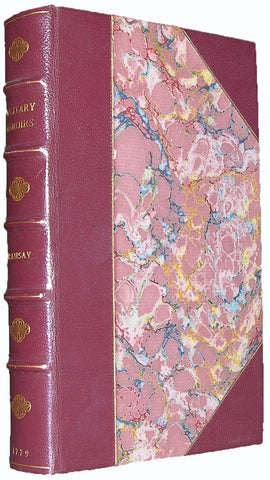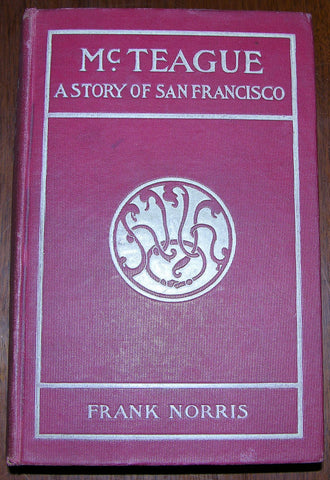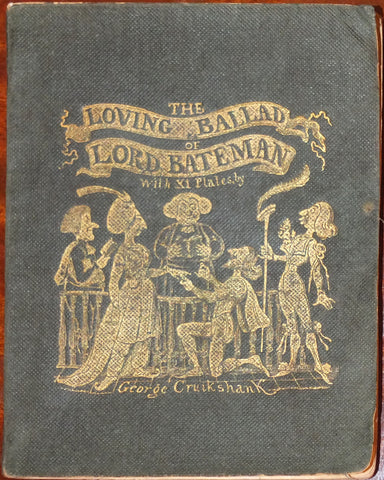Paul Gauguin (1848-1903) - Julius Meier-Graefe (1867-1935), Noa Noa
Paul Gauguin (1848-1903) - Julius Meier-Graefe (1867-1935)
Noa Noa
Berlin: for Marees-Gesellschaft by the Ganymed Presse, 1926
Large 4to., (12 4/8 x 9 4/8 inches). Facsimile of the original manuscript. Illustrated throughout with collotype reproductions of original watercolours and photographs, laid-down and in the text. Original cream linen, lettered in brown on the upper cover, imprint laid down on the front paste-down; pictorial dust jacket (a bit frayed at the edges and strengthened with Scotch tape from behind).
First trade edition thus, also issued loose in portfolio with an original woodcut. During his first visit to Tahiti (1891-1893), Paul Gauguin "documented his experiences in his travel journal, Noa Noa. We first encounter the phrase, 'noa noa,' when Gauguin describes the scent of the Tahitian women:
A mingled perfume, half animal, half vegetable emanated from them; the perfume of their blood and of the gardenias—tiaré—which they wore in their hair.
"Téiné merahi noa noa (now very fragrant)," they said (Gauguin, Paul. Noa Noa., translated by O. F. Theis. NY; Nicholas l. Brown, 1919, p. 12.)
"When he returned to Paris in 1893, he was anxious to exhibit the works he produced during his two year sojourn. Realizing that the Parisian art world might not understand his new work, he began writing Noa Noa to accompany an exhibition at the Durand-Ruel Gallery in Paris. He hoped that the travel journal would provide the viewer with the context necessary to comprehend the new themes in the works on exhibit. The work however, was not completed in time for the exhibition opening.
"Gauguin's first journey to Tahiti can be interpreted as self-imposed exile. In light of his contemporaries' incomprehension of his art, his hostile critics and the financial disaster he was facing, Tahiti was an escape from Western civilization—an unspoiled land. To finance his trip to Tahiti, Gauguin organized a sale of 30 of his art works with the French auction house, Hôtel Drouot, on Monday, February 23, 1891. The sale was relatively successful and the proceeds from the sale amounted to about 9,860 French francs. He left Marsailles on April 1, 1891, and arrived in Papeete on June 9—a 69-day voyage.
The publication history of the manuscript is as tumultuous as Gauguin's life. Before leaving for Tahiti, Gauguin gave the manuscript to the poet, Charles Morice (1860-1919), who kept it until 1908 when he sold it to the publisher Edmond Sagot to settle debts he had incurred. The first manuscript of Noa Noa was forgotten for nearly forty years. Gauguin kept only his original draft of their collaboration from 1893-1894. It was abundantly illustrated with photographs, watercolors, clippings, drawings and woodcuts, all pasted into the album. This copy was discovered in his hut in the Marquesas after his death in 1903. Morice and Gauguin had a serious falling-out over the financial arrangements, and after Gauguin's death, his wife and children continued to squabble about publication rights and financial arrangements. World War I intervened, which further delayed publication. In 1916, the publisher George Cris negotiated a contract with Gauguin's wife, Mette, who died in 1920. Finally, in 1924, the manuscript was published with 24 woodcuts inspired by Gauguin and created by his one-time artist friend, Georges-Daniel de Monfried" (Cleveland Museum of Art online).
We Also Recommend

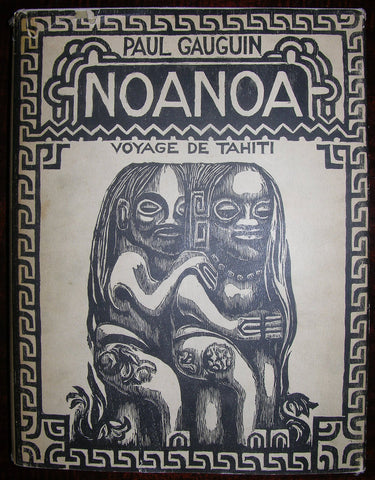
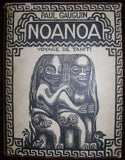


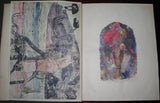
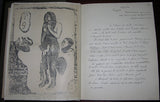

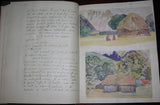
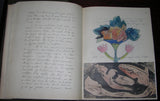
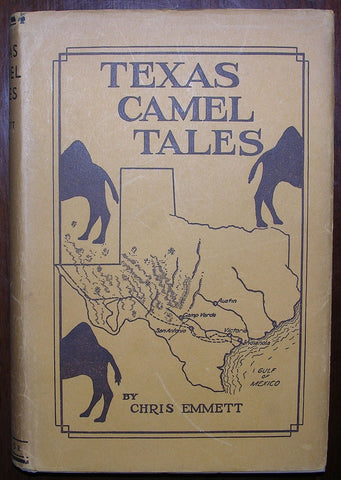
![Christopher Sauer/Sower II (1721-1784). Ein Einfaltiges Reim-Gedicht. [Probably Germantown: Gedruckt bey Leibert und Billmeyer, 1784]](http://aradergalleries.com/cdn/shop/products/DSCF4503_large.jpg?v=1544478572)
